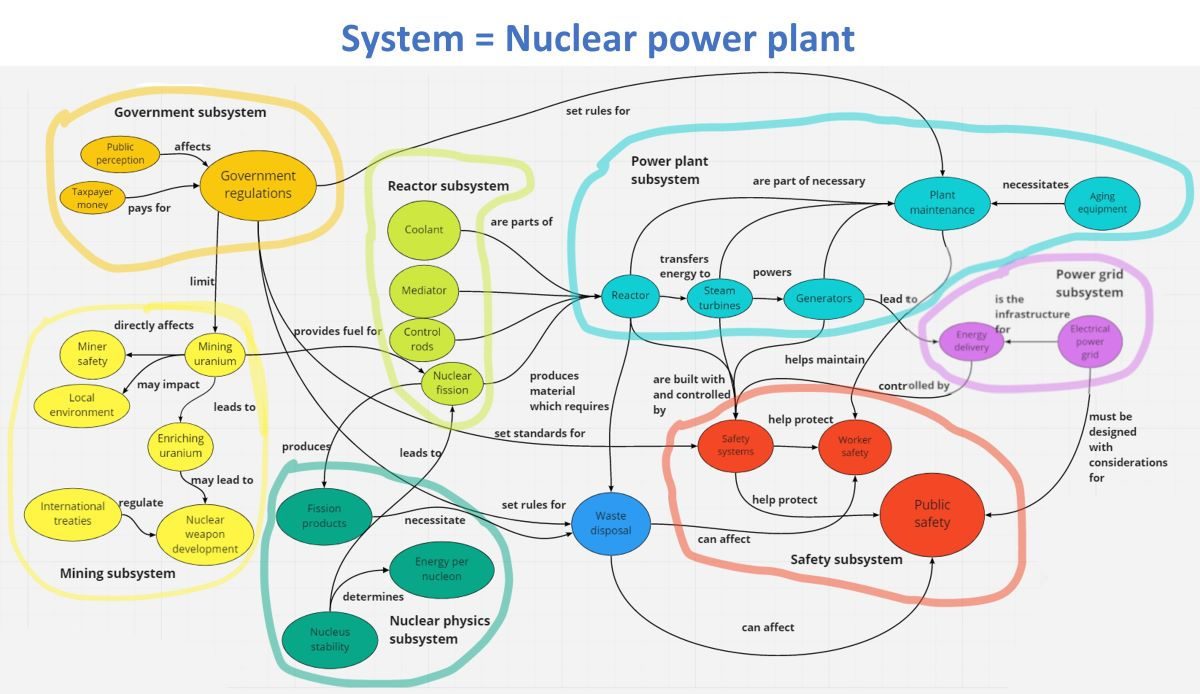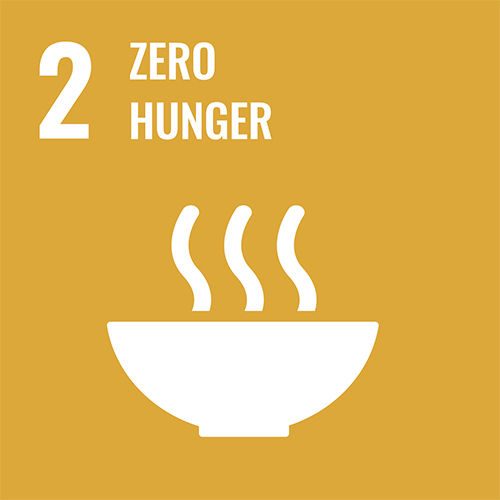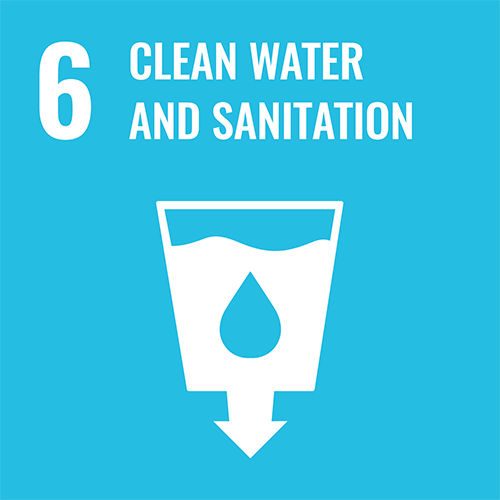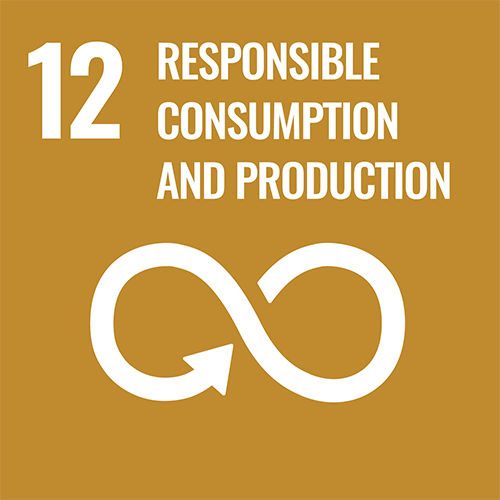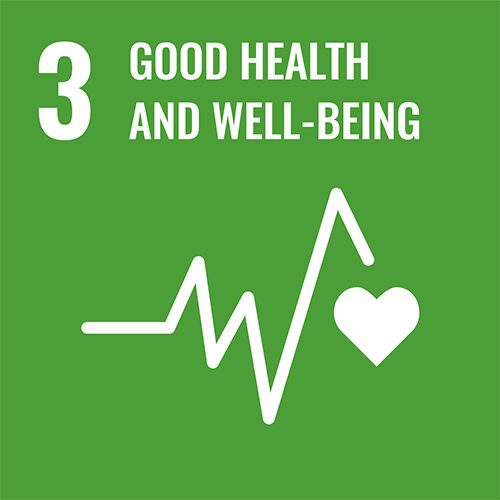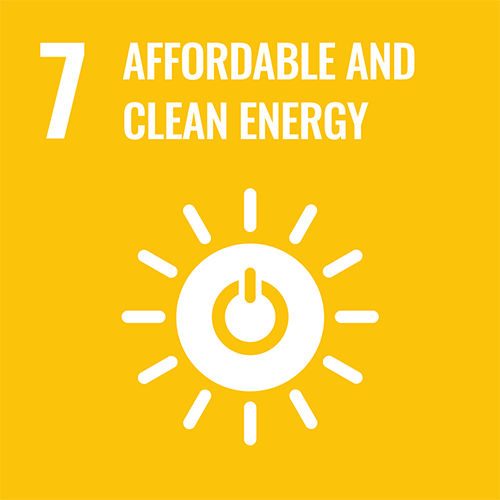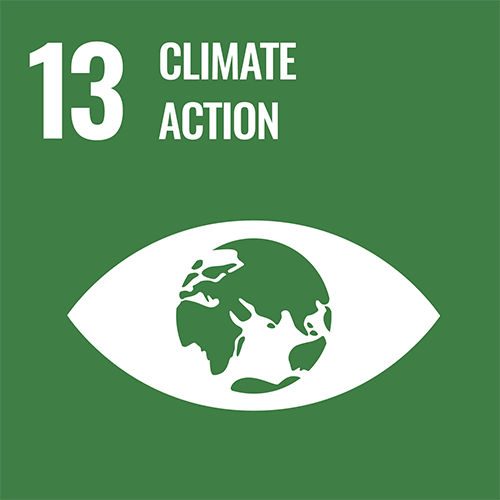Introduction to Systems Thinking in Chemistry
Module Overview
This module serves as a foundation and introduction to systems thinking in chemistry classes, introducing key terminology and concepts in systems thinking with specific ties to green and sustainable chemistry concepts and the United Nations Sustainable Development Goals (UN SDGs). The authors created this module to be useful for both instructors and students who may be new to systems thinking in chemistry
The units in this module can be used in any semester of general or organic chemistry, with suggested use prior to introducing other systems thinking content and can be broken up into smaller pieces and used as appropriate within a systems thinking unit. The module uses a mix of traditional slide-based lectures, in-class small group or think-pair-share activities, out-of-class guided exercises, and simple hands-on computer simulations; instructors can also adapt the material for other modalities.

Module Goal
Students will be able to understand the basic terminology and concepts in systems thinking and how they can be applied to chemistry. Students will use systems thinking to provide a holistic understanding for the application of green chemistry and addressing grand challenges, such as the UN SDGs.
Audience
General and organic chemistry undergraduates of all levels
Class Time Requirement
Approximately six 50-minute class periods
Module Authors
Katherine B. Aubrecht, Stony Brook University; John B. Randazzo, North Park University

Module Summary
Assumed Prior Knowledge
This module is meant as an introduction to be deployed anywhere in the undergraduate chemistry curriculum. Therefore, little to no prior knowledge is assumed besides what would be expected for college chemistry student, i.e., basic math, including scientific notation, passing familiarity with Earth science, such as global warming and greenhouse gases, and some familiarity with what chemists study.
Learning Objectives
Students will be able to:
- Define fundamental systems thinking terminology.
- Give an example of a system and identify its components.
- Explain how a complex phenomenon would be analyzed using systems thinking.
- Compare and contrast reductionist and systems thinking approaches to complex phenomena, including strengths and weaknesses.
- Explain what the United Nations Sustainable Development Goals (UN SDGs) are and be able to list several of UN SDGs.
- Discuss the role of chemistry in achieving the UN SDGs
- Explain how systems thinking guides chemistry’s contributions to attaining the UN SDGs.
- Characterize entities by their size.
- Characterize processes by their time scale.
- Explain what size and time scale is appropriate for a given problem or system.
- Identify how spatial scales apply to different fields in science.
- Define what system boundaries are and explain how the question being posed will determine the system boundaries.
- Explain why defining appropriate system boundaries is an important step in modeling / visualizing a system.
- Identify a feedback loop as being reinforcing or balancing.
- Analyze a causal loop diagram, including assigning link polarities.
- Construct a causal loop diagram.
- Explain why feedback loops are important in systems thinking and give examples of feedback loops in systems that involve chemistry.
- Identify stocks and flows in stock-flow diagrams, and identify appropriate units for them.
- Explain what a systems dynamics model is, what its output is, and how it could be useful.
- Explain how the progress of a chemical reaction can be modeled using a systems dynamics model.
- Identify feedback loops in systems dynamics models, using either the structure of the model or the behavior over time graph.
- Apply concepts from these introductory units to analyze the life cycle of three different types of grocery bags.
- By interpreting a stock-flow diagram, explain potential environmental impacts from the production, use, and disposal of three different types of grocery bags.
- Design potential solutions to the environmental damage done by grocery bags by proposing chemical products or processes or changes individual or societal behavior.
- Explain how systems thinking supports the development of more environmentally responsible chemical products and processes.

Unit Overview
Unit 1: What are Systems and What is a Systems Thinking Approach to Complex Phenomena?
|
|
1.1 | Systems terminology matching pre-activity. Many terms have common-English definitions that students can match without specialized knowledge; serves as a baseline for the end-of-unit assessment (20 minutes, inside or outside class). |
1.2 | Interactive lecture slides on systems and systems thinking (20 minutes in class). |
1.3 | Interactive lecture slides (or handout) on approaching complex systems from reductionist vs. systems thinking perspective (20 minutes inside or outside class). |
1.4 | Systems terminology matching post-activity. Same activity as 1.1 to assess knowledge gained (20 minutes in class). |
|
|
Unit 2: Why is Systems Thinking Valuable for Learning & Practicing Chemistry?
|
|
2.1 | Lecture slides on the UNSDGs. Activity in which students focus on one of six UNSDGs that have clearer connections to chemistry. Students are prompted to consider the elements of the system involved in that UNSDG and the potential for chemistry to contribute (15 minutes for slides; 30 minutes inside or outside of class for activity – better done collaboratively). |
2.2 | Lecture slides on systems thinking as a means of developing a deeper and more interconnected knowledge of chemistry (15 minutes in class). |
2.3 | Self-reflection on motivation for taking the chemistry course, anticipation of how content in the course will connect to other courses, and on systems thinking (20 minutes, outside of class, individual). |
Unit 3: Spatial and Temporal Scales and System Boundaries
|
|
3.1 | Card sorting activity (10 minutes in class). Simple activity where students match pictures with size scales. |
3.2 | Slides on spatial and temporal scales and system boundaries (20 minutes in class).
|
Unit 4: Feedback Loops
|
|
4.1 | Interactive lecture slides on feedback loops and causal loop diagrams (20 minutes in class). |
4.2 | Activity on analyzing and drawing causal loop diagrams (30 minutes, in or outside of class). |
|
Unit 5: Stock-flow Diagrams and Systems Dynamics Models
|
|
5.1 | Lecture slides on stock-flow diagrams as a means of visualizing a system and as the basis for a systems dynamics model (15 minutes, in class). |
5.2 | Activity introducing systems dynamics models with simple water in tub models to familiarize students with stocks, flows, converters, behavior over time graphs, and feedback loops in the context of a systems dynamics model. The activity uses Stella online. Students will need internet access, but no special software. (20 minutes, in or out of class). |
5.3 | Activity in which students analyze systems dynamics models of chemical reactions (first order and second order), a simplified Keeling curve, and a temperature controlled hot-plate. The activity uses Stella online. Students will need internet access, but no special software. (30 minutes, in or out of class).
|
Unit 6: Applying Systems Thinking to Grocery Bags: Identifying Environmental Impacts and Potential Leverage Points
|
|
6.1 | Introductory slide deck- bags as materials and following the carbon atoms through the life cycle (10 minutes in class). |
6.2 | Analyzing and extending a stock flow diagram for single use PE bags, paper bags, and reusable PP bags. Guided activity where students will think about the impacts of steps in the life cycle of grocery bags and how they affect the real world. Terminology and concepts from the prior five units are applied in this activity. Also, students will analyze data relevant to the global warming impact of grocery bag life cycles (30 minutes in or out of class). |
|
Download Module
Introduction to Systems Thinking in Chemistry Includes:
- Module Overview Document
- Units 1-6
- Formative Assessments
- Summative Assessments

Copyright Statement
We encourage the reuse and dissemination of the material here for noncommercial purposes as long as attribution to the original material on the ACS site is retained. Material on this page is offered under a Creative Commons Attribution 3.0 License unless otherwise noted.
- Attribution required
- Allows remix of content
- Commercial use not allowed
About the Green Chemistry Module Project
The ACS Green Chemistry Instiute has partnered with chemistry instructors from over 45 institutions to develop green chemistry education resources for undergraduate students studying general and organic chemistry.

